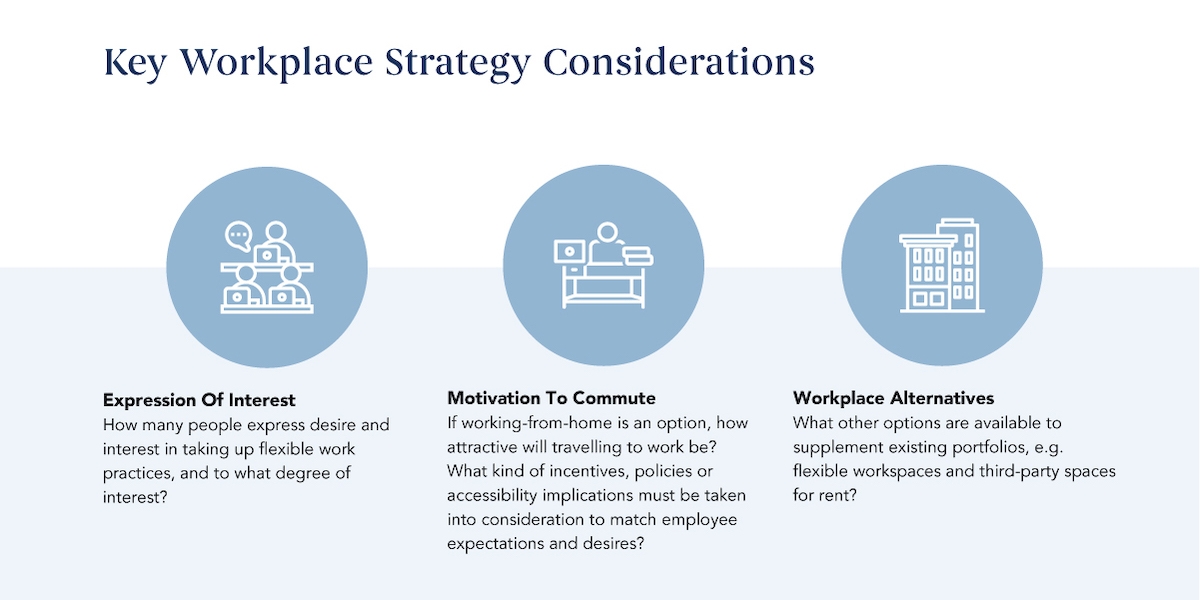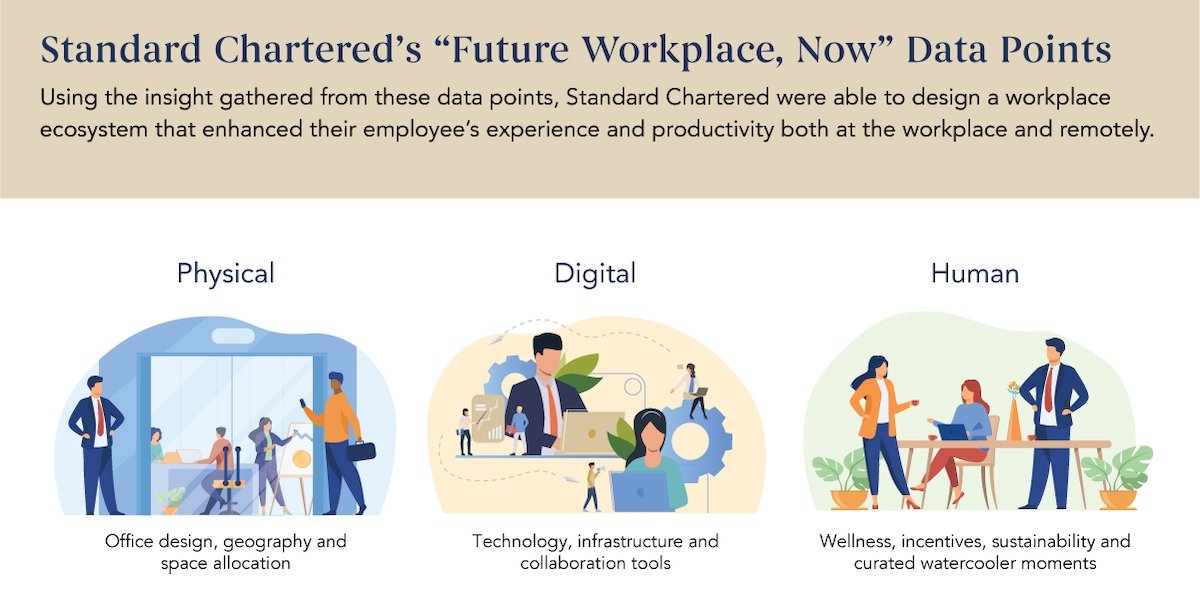Why the Future of Work Is About Flexibility and Choice
The Executive Centre is a Business Reporter client.
As the future of work evolves, discover how MNCs such as Standard Chartered Bank are reevaluating their workplace strategy.
For most of the past century, the concept and social construct of where professionals work has primarily been confined to four walls and a desk. Whether that has been in a private, shared or open-plan office, the workspace has revolved mainly around an outdated factory-like work model that measures productivity with metrics like hours worked, rather than quality of output.
Today, modern technology and globalized communication systems have allowed us to become a more agile and mobile workforce. Collaboration now happens in real time and from anywhere—through mobile phones, virtual conferences, social media and even in line waiting for coffee. As a result, the global pandemic and the resulting work-from-home measures have caused businesses and industries to urgently reevaluate their real estate portfolios, communication channels and infrastructure needs.
Although the layout of office space hasn’t fundamentally shifted, the design and technology of its infrastructure and the usage by its occupants have changed significantly. The Covid-19 pandemic, like other global crises, has been a significant disruptor to the way we work, but it has also been an accelerator of social transformation. Successful companies in the future will be quick to adopt flexible working practices.
The drivers of workplace change
During times of uncertainty and economic turbulence, many businesses look to retain as much cash as possible and to minimize costs and expenditures. As such, when they downsize, they look to reduce real estate and the expenses that go with it, such as headcount, capital expenditures and operational costs.
However, many companies with long-term, direct-from-landlord fixed leases find themselves unable to adjust their real estate footprint as the markets change. For these reasons, during the global financial crisis (GFC) of 2008–2010, many corporations began to see the potential in leveraging flexible workspaces and the coworking culture that was already blossoming at the turn of the millennium.
“As a solution, flexible workspaces provide ready-to-use, fully furnished and serviced workspaces for the headcount that’s needed at hand. This gives businesses much more flexibility to scale up or even down, and even to relocate at relatively short notice compared to a direct lease with a landlord,” says Paul Salnikow, founder and CEO of The Executive Centre, Asia Pacific’s leading premium flexible workspace provider. “However, as with many trends, soon after the turbulence of the GFC passed, many businesses returned to the old ways of using permanent leases with direct landlords. With Covid-19, however, since the issue is fundamentally driven by both social well-being as well as financial challenge and change, leaders are being forced to re-look at how they lead their organizations and people.”
As workers find success and productivity amid the newly implemented flexible working arrangements, many of the social changes—unlike in the aftermath of the GFC—will roll over into the “new normal” and flexible working practices will become part of the working norm in the future of work. In fact, The Executive Centre’s 2021 Mid-Year Sentiment Survey found that over 82% of their members believe that flexible workspaces are crucial to their business operations.
One reason for this is that flexible workspaces help recruit from a wider, international talent pool of specialist expertise, and help retain top talent by providing greater workplace flexibility. “The talent of the future are expecting flex—whether that’s flexible work hours or locations. And for many business leaders I’ve spoken with, being flexible is no longer an option but a requirement,” says Sheridan Perkins, Program Director of Standard Chartered Bank’s Future of Work Now program.

Traits of successful flex adopters
To successfully transition toward flexible working practices, companies need to look inward and understand their business requirements and priorities, as there is no one-size-fits-all solution. A successful adopter of flex should interview and extensively collaborate with employees, conduct research to make informed decisions, seek external consultations with multiple industry partners and understand where its operations need to be geographically, and how the occupants will use those spaces.
Taking into account insights from the aforementioned data points can help businesses ascertain the appropriate implementation route for their future workplace strategy. For example, the results can lead to knowing whether your business and employees require a network of serviced offices or coworking spaces around one central business district, or across the world.
Perkins explained that SCB’s Future of Work Now strategy for implementing flexible work practices boils down to three factors: physical, digital and human.

The program has found that the future of work is about empowering employees with choice and workplace flexibility. Its worldwide employee workplace trends survey of Standard Chartered Bank’s office-based staff found that its teams in countries with weaker communications infrastructure preferred to return to traditional offices; employees in regions with higher living-space density preferred to return to either their traditional offices or flexible workspaces away from home. In comparison, employees in countries with an existing flexible working culture and established work-from-anywhere infrastructure saw higher adoption rates for hybrid work models.
“The industry today is much more open-minded, and there is a growing movement and workplace trend where employers are responding to their employees,” says Shelley Boland, Head of Property, Asia Pacific, Standard Chartered Bank. “Organizations are seeing things from the perspective of individual choice. Successful adopters of flex will be those that have the foresight to model and visualize how workplace changes may affect business outcomes, operations and employees. More than that, it’s about being flexible and agile enough to adapt if those models fail.”
Download the whitepaper report for more insights and best practices from Standard Chartered Bank and The Executive Centre’s Future of Work collaboration.
— Industry view from The Executive Centre
This article originally appeared on Business Reporter. Image credit: Courtesy of The Executive Centre
